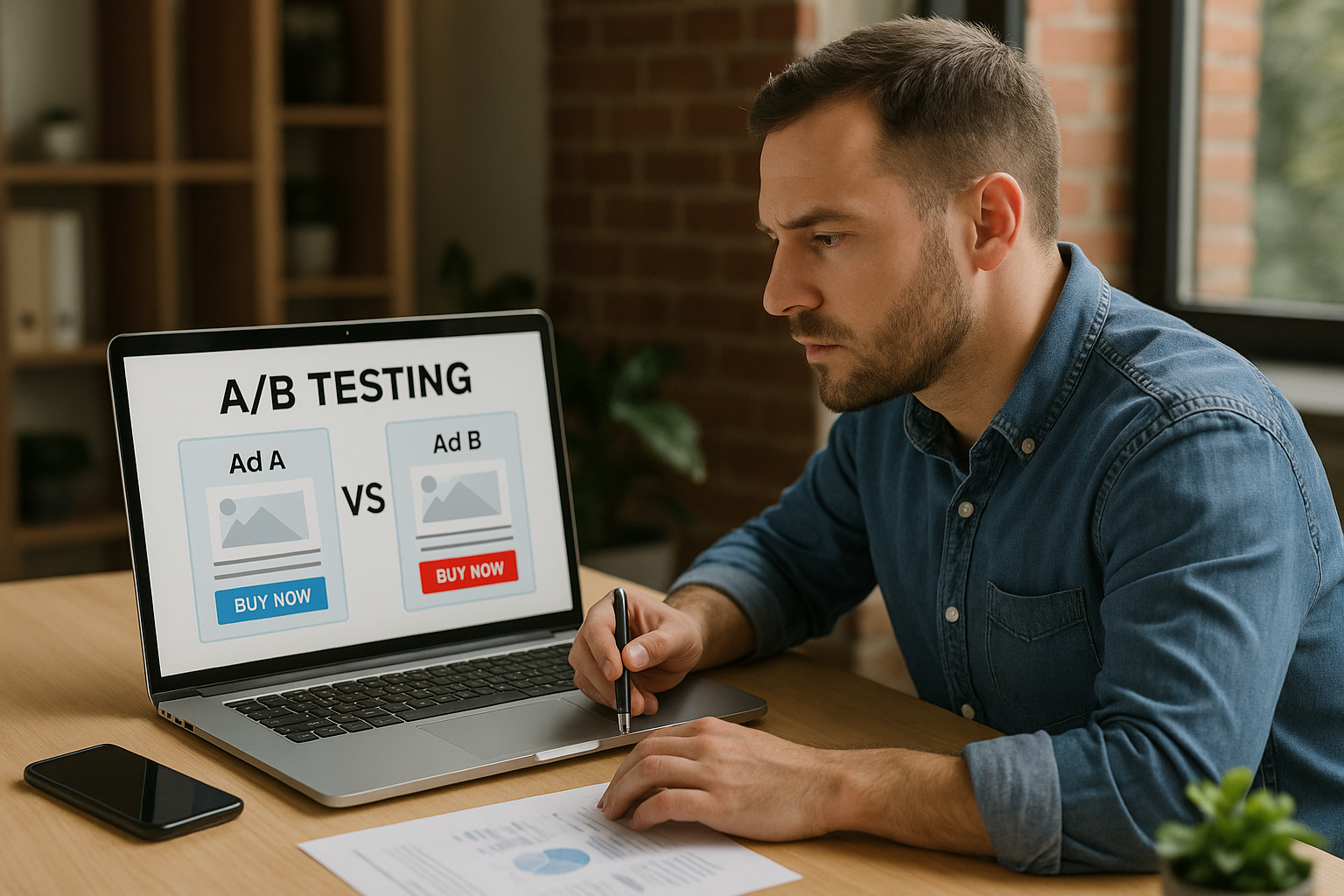Imagine launching a Facebook or Google Ads campaign and immediately knowing which image, headline, or call-to-action will convert best.
The truth is — you don’t.
That’s why A/B testing exists.
In paid traffic, A/B testing (also called split testing) is the key to consistent improvement. It allows you to test ideas, validate assumptions, and optimize for performance — instead of guessing.
In this article, you’ll learn how A/B testing works, what to test, how to set up simple tests, and how to analyze results to improve your ROI.
What Is A/B Testing?
A/B testing is the process of comparing two or more versions of an ad, landing page, or other campaign element to see which performs better.
You test one change at a time, such as:
- Headline A vs. Headline B
- Image A vs. Image B
- CTA button “Download Now” vs. “Get Your Free Guide”
The goal is to determine which version generates more clicks, leads, or sales, based on real performance data.
Why A/B Testing Is Crucial for Traffic Managers
Without testing, you’re making decisions based on guesswork. With A/B testing, you get:
- Better results over time
- Lower cost per result
- Data to support creative and budget decisions
- Clarity on what your audience actually responds to
Smart traffic managers don’t launch perfect campaigns — they test into success.
What You Can Test in Paid Traffic Campaigns
Here are the most common elements to test — and why they matter:
🖼️ Ad Creative
- Image vs. video
- Different photo styles (lifestyle, product-focused, graphics)
- Colors or background changes
✍️ Ad Copy
- Headline variations
- Primary text length (short vs. long form)
- Emotional vs. logical tone
- Benefit-focused vs. feature-focused
📍 Call-to-Action (CTA)
- “Download Now” vs. “Learn More”
- “Get Your Free Guide” vs. “Claim Offer”
- Button color or placement (for landing pages)
🎯 Audience Targeting
- Interest A vs. Interest B
- Lookalike 1% vs. Lookalike 3%
- Age group, device, or location segmentation
🌐 Landing Pages
- Page layout
- Headline text
- Form length
- Use of testimonials or videos
How to Run A/B Tests (Step-by-Step)
Let’s use Meta Ads (Facebook/Instagram) as an example:
Step 1: Choose ONE Variable to Test
Never test multiple things at once. Choose one clear element:
Example: Test two different headlines.
Step 2: Duplicate the Ad or Ad Set
Create two identical ads — only change the element you’re testing.
Step 3: Run Them Simultaneously
Let both ads run at the same time, with the same budget and audience. This ensures fair comparison.
Step 4: Wait for Meaningful Data
Let the test run for at least 3–5 days or until each version has 1,000+ impressions (or 100+ clicks, depending on your volume).
Step 5: Choose the Winner
Look at metrics like:
- CTR (for creative and copy tests)
- CPC (to measure cost-efficiency)
- Conversion rate (for landing page tests)
- Cost per conversion (to determine ROI)
Pause the loser and keep optimizing the winner.
A/B Testing in Google Ads
Google Ads allows testing through:
- Responsive Search Ads – automatically tests headlines and descriptions
- Campaign Experiments – split test entire campaign strategies
- Landing page experiments – using Google Optimize (or GA4 events)
Tips for Google:
- Always test match types and ad variations separately
- Monitor Quality Score and ad relevance
- Use UTM parameters to track performance in GA4
Common A/B Testing Mistakes (And How to Avoid Them)
❌ Testing too many things at once
✅ Stick to ONE variable per test.
❌ Ending the test too early
✅ Wait until you have enough data to make a confident decision.
❌ Not tracking the right metric
✅ Choose your primary KPI based on your goal (CTR, CPL, ROAS, etc.).
❌ Ignoring the context
✅ Consider external factors like holidays, budget limits, or algorithm updates.
How to Analyze and Apply What You Learn
Don’t just run a test — learn from it.
Ask:
- What insight did I gain about my audience?
- Can I use this winning element in other campaigns?
- Can I now test a new variable to improve further?
A/B testing is an ongoing process, not a one-time event.
How Often Should You Test?
- For active campaigns: at least one test every 2 weeks
- For new funnels: test multiple creatives from day one
- For retargeting: test offers, CTAs, and urgency messaging
- For landing pages: test layout, copy, or testimonials every month
The more you test, the faster you learn — and the better your campaigns become.
Final Thoughts: Test Smart to Win Big
Great campaigns are rarely built on guesswork — they’re built through continuous experimentation.
A/B testing gives you control, confidence, and consistent growth.
By understanding what your audience responds to and adapting based on data, you become more than a traffic manager — you become a conversion strategist.
So don’t guess. Test.
